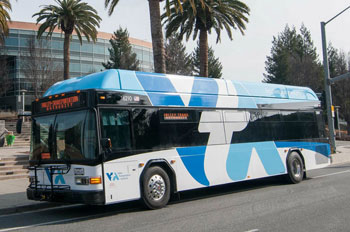
April 5, 2017 – STC, Inc., manufacturer of the EMTRAC signal-priority system, has integrated the Galileo satellite navigation system with EMTRAC equipment installed in transit and emergency vehicles. Similar to the GPS navigation system maintained by the United States, Galileo is the new European navigation system and will have 24 operational satellites at full capacity. The Galileo system commenced limited initial service on December 15, 2016—and EMTRAC is the first signal-priority system capable of Galileo satellite navigation.
Signal priority systems are installed in traffic systems throughout North America, and they are referred to as either Transit Signal Priority (TSP) or Emergency Vehicle Preemption (EVP) when describing the specific method used to grant priority to equipped vehicles. With this system, equipped vehicles are able to automatically request green signals through equipped intersections, safely reducing travel time while increasing efficiency.
With this addition, the EMTRAC system simultaneously tracks Galileo system satellites along with the GPS and GLONASS constellations, increasing the overall number of satellites used to determine vehicle positions, resulting in enhanced accuracy. The EMTRAC system also utilizes dead-reckoning navigation through multiple inertial sensors, including three-axis accelerometer and gyroscope sensing to maintain accuracy in difficult urban conditions, such as urban canyons, tunnels, and multi-level highways.
According to STC President Brad Cross, integration of the Galileo navigation system immediately increases accuracy, and performance will continue to improve in the coming years.
“As more satellites are added to the Galileo constellation, and it becomes fully operational, we expect the EMTRAC system to be more reliable than ever in areas where sky view is obstructed,” Cross said.
STC recently conducted a controlled test of the EMTRAC system—using Galileo navigation exclusively. During the test, an EMTRAC-equipped vehicle successfully interpreted detection zones and transmitted priority requests to a simulated intersection utilizing only Galileo satellites.
“We believe this to be the first test of its kind in North America,” Cross said.
While high precision is not necessary for many signal-priority scenarios, Cross says there are specific situations where it is essential.
“Precision positioning is critical for applications like rail-worker safety and lane-specific signal response, and the availability of additional navigation systems improves accuracy, particularly in those areas where it’s very difficult to obtain a satellite fix.”

Similar technology is also used on EMTRAC transit-rail products, which alert train operators and wayside workers when there’s potential for unsafe conditions.
“We need to be able to report which track a particular train or worker is on at a rail yard where there may be 10 or 15 sets of tracks, side by side,” Cross said.
Cross added that all future deliveries for EMTRAC vehicle equipment will include Galileo capability, and vehicle equipment with Galileo capability will be compatible with existing EMTRAC wayside equipment, making upgrades to installed wayside equipment unnecessary.
STC has manufactured the EMTRAC system for over 25 years, and it is used by traffic, transit, and first-response agencies in the United States, Canada, and Mexico.
EMTRAC Rail website: http://www.emtracrail.com
European Global Naviation Satellite Systems Agency website: https://www.gsc-europa.eu/system-status/Constellation-Information
